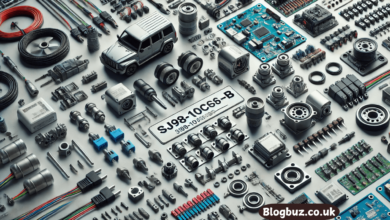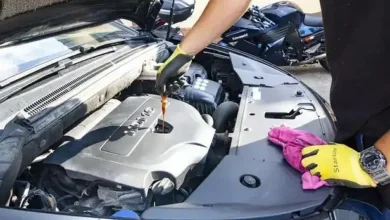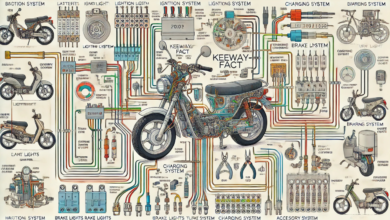Caldera XB 10E Running 3S LiPo Battery: Unleashing Maximum Performance

The Caldera XB 10E, a powerhouse in the RC (radio-controlled) car realm, has gained considerable attention for its robust performance and adaptability in varying terrains. This detailed exploration delves into the enhanced capabilities of this RC car with a 3S LiPo battery, focusing on significant performance upgrades, essential battery care, and maintenance strategies to optimize usage.
Introduction to the Caldera XB 10E
The Caldera XB 10E is celebrated for its powerful brushless motor and sophisticated 4WD (four-wheel drive) system, which ensure top-notch efficiency and better control across rugged terrains. The RC model stands out with its adjustable suspension and waterproof electronics, making it versatile and durable in damp conditions.
What is a 3S LiPo Battery?
A 3S LiPo battery is a Lithium Polymer battery setup with three cells in series, offering a combined output of 11.1 volts. This battery type is favored in the RC community for its high energy density, lightweight, and robust power delivery compared to other battery types like NiMH (Nickel-Metal Hydride) or standard Li-ion batteries.
Enhanced Performance with 3S LiPo
Speed and Acceleration
Switching to a 3S LiPo battery on the Caldera XB 10E results in a noticeable increase in speed and acceleration. The additional voltage allows the car’s motor to operate at higher speeds, enhancing overall performance during races and casual play. With a 3S LiPo, the Caldera XB 10E can reach speeds up to 43-45 mph, a significant leap from the 37 mph achievable with a 2S LiPo battery.
Throttle Response and Power Delivery
Besides speed, the throttle response with a 3S LiPo is sharper, facilitating more precise control over the vehicle, especially in scenarios requiring quick bursts of speed or sudden stops. This improved response is crucial for maneuvering through tight spots and complex tracks, giving drivers an edge in competitive racing.
Run Time
Due to their higher energy density, LiPo batteries generally offer longer run times. This means more extended periods of enjoyment before recharging, which is particularly beneficial for extended driving sessions, reducing downtime and increasing playtime.
Critical Considerations
Heat Management
The power increase with a 3S LiPo battery comes with a rise in heat generation from both the motor and ESC (Electronic Speed Controller). Managing this heat is vital to prevent damage to the vehicle’s components. Implementing additional cooling measures, such as heat sinks or cooling fans, can help maintain optimal temperatures during operation.
ESC Compatibility
Ensuring that the ESC can handle the increased load from a 3S LiPo is crucial. The stock ESC might require an upgrade to safely accommodate the higher voltage and current draw without risking overheating or damage.
Durability of Components
Higher power levels can strain the vehicle’s mechanical parts, such as gears and axles. Frequent inspections and upkeep can help identify problems and address wear and tear early, maintaining the vehicle’s integrity and performance.
Battery Care and Maintenance
Battery Inspection and Preparation
Before each use, inspect the battery for any signs of damage or swelling. Ensure it is fully charged and the connectors are secure and compatible with the vehicle’s setup. Proper placement and securing of the battery within its compartment are essential to prevent shifts during movement, which could lead to inconsistent performance or damage.
Monitoring and Storage
Continuously monitor the battery’s temperature and voltage during use to avoid overheating and over-discharging, as these can significantly shorten the battery’s lifespan and even pose safety risks. Storing the battery in a cool, dry place and at a safe charge level when not in use is crucial to maintaining its health and functionality.
Conclusion
The Caldera XB 10E, equipped with a 3S LiPo battery, represents the pinnacle of RC car performance, combining high speed, responsive control, and extended run times. By understanding the demands and benefits of this powerful battery type, enthusiasts can significantly enhance their RC experience. Remember, regular maintenance and careful monitoring are crucial to maximizing the life and performance of your Caldera XB 10E, ensuring thrilling yet safe RC adventures.
FAQs on Caldera XB 10E Running 3S LiPo Battery
What is a 3S LiPo battery?
A 3S LiPo battery is a Lithium Polymer battery with three cells connected in series, producing 11.1 volts. This type of battery is preferred in RC automobiles because of its high energy density and ability to deliver significant power, enhancing speed and performance.
What are the main benefits of using a 3S LiPo battery in the Caldera XB 10E?
Using a 3S LiPo battery in the Caldera XB 10E enhances the vehicle’s speed, throttle response, and power delivery. It allows the car to operate more efficiently, achieving higher speeds (up to 43-45 mph) and better acceleration than a 2S LiPo battery.
Before using a 3S LiPo battery in my Caldera XB 10E, what should I check?
Before using a 3S LiPo battery, ensure it is fully charged and free from physical damage, such as swelling or leaks. Verify that the battery’s connectors are compatible with your vehicle’s setup to prevent electrical issues. It’s also crucial to secure the battery properly in its compartment to avoid shifts during operation.
How does a 3S LiPo battery affect the Caldera XB 10E’s temperature?
The increased power output from a 3S LiPo battery results in higher heat generation, particularly in the motor and ESC (Electronic Speed Controller). Managing this heat is critical to prevent damage. Consider using additional cooling mechanisms like heat sinks or fans to maintain safe operating temperatures.
Are there any risks associated with using a 3S LiPo battery in the Caldera XB 10E?
The main risks include overheating, over-discharging, and potential damage to the ESC if it’s not rated for a 3S LiPo’s increased voltage. Continuously monitor the vehicle’s components’ temperature and manage the battery’s charge level to mitigate these risks.
You May Also Read: Driver Rear View Mirrors 1/43 McLaren M8A 1968: Perfecting the Details




